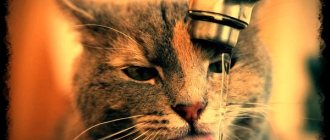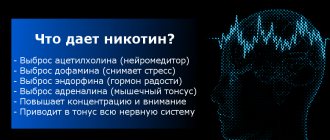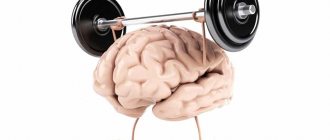How often do you touch your hair when you’re worried, or maybe you’ve noticed that your child or just a good friend does this? Psychologists warn that the habit of touching your hair too often can become pathological and develop into trichotillomania. This seemingly innocent habit can lead to serious psychological and even physical problems - pulling out hair causes not only a cosmetic defect, but also the formation of bleeding bald patches.
Trichotillomania - description of the disease
Trichotillomania is a mental disorder; the main manifestation of the pathology is tearing out one's own body hair.
In most cases, obsessive desire affects only the face - people suffering from the disease pull out hairs from their heads, eyebrows, and eyelashes. Less commonly affected are the arms, legs, armpits, and pubic area.
Hair is removed not only with your fingers, but also with improvised devices, for example, tweezers.
At the initial stage of development of the pathology, hair pulling occurs mechanically, but as the disease progresses, patients are already aware of their actions, but cannot refrain from the bad habit.
Areas of baldness in trichotillomania are usually located symmetrically, and hairs can be pulled out from several areas of the body at the same time.
Trichotillomania most often occurs in isolation. In 10% of cases, the disease is combined with trichophagia - ingestion of plucked hair.
The digestive organs do not process hair, which leads to the formation of hairballs, which can result in the formation of ulcers on the mucous membranes of the stomach and intestines, constipation, and intestinal obstruction.
A type of trichotillomania is trichothemmania - the removal of only gray hairs, which, according to patients, relieves itching of the skin.
The development of trichotillomania is possible at any age. In children, pathology is most often detected between the ages of 2 and 6 years. In women, the pathology occurs twice as often as in men and is more severe.
STORY
The term “trichotillomania” was introduced in 1889 by the French dermatologist Francois Henri Hallopeau (1842-1919), who presented the medical community with the medical history of a young man suffering from itching of the scalp. When the itching became unbearable, the patient would tear out his hair in passion. The phenomenon was called trichotillomania. The name comes from three Greek words: trich - hair, tillo - tearing out, pulling out, mania - pathological attraction.
Francois Henri Hallopeau In 1968, ED Vaughan, JL Sawyers and HW Scott described Rapunzel syndrome (named after the main character in the Brothers Grimm fairy tale of the same name about a girl with very long hair) - a type of intestinal obstruction caused by the systematic ingestion of hair (trichophagia), resulting in which causes a conglomerate consisting of hair (trichobezoar) to form in the stomach and small intestine. FV Mannino and RA Delgado in 1969 noted that TTM occurs more often in girls than in boys. In their opinion, the main cause of the disease is the disharmonious relationship between mother and child in early childhood, and TTM can only be treated with psychotherapy. In the domestic literature, O.B. was the first to describe TTM. Feltsman in 1918. In the USSR, the most patients were analyzed by V.I. Garbuzov (1971) and V.M. Bykov (1983).
Causes
Trichotillomania in psychiatry is considered obsessive-compulsive disorder. The exact cause of the disease has not been established. Most patients note that their uncontrollable desire to pull out hair arose against the background of prolonged stress.
Psychological and morphological factors provoking pathology are distinguished, these are:
- Prolonged depression;
- Phobias;
- Dementia;
- Neurodiseases;
- Head injuries;
- Schizophrenia;
- Anemia;
- Bulimia.
Often, a pathological habit is detected in chronic drug addicts and alcoholics.
Trichotillomania can be caused by hormonal imbalance. This fact is confirmed by the development of the disease in adolescence in girls and boys who have not previously had problems with the psycho-emotional sphere.
Recent studies have revealed mutations in the SLITKR1 gene in some people with the disease.
Trichotillomania can be combined with other obsessive disorders. In children, hair pulling is often combined with nail biting, frequent blinking, and head turning.
Trichotillomania is essentially a release of negative energy accumulated inside. Sick people cause themselves physical pain, subconsciously wanting to get rid of psycho-emotional stress.
Adults are well aware of the abnormality of their behavior, which only intensifies the depressive state - a vicious circle arises, from which it is not so easy to get out.
Provoking factors of the disease
Psychiatry classifies the disease as a type of obsessive-compulsive neurosis. This is not a bad habit, but a mental illness that requires treatment. A person may pull out hair automatically and not feel anything, or they may purposefully cause themselves pain. The patient is not aware of his actions, is unable to control them, or stop them. Trichotillomania can be triggered by:
- psychiatric disorders and phobias, acquired or age-related dementia, dementia, schizophrenia, concussion, other mental illnesses;
- normal eating disorders (bulimia, anorexia);
- injuries, injuries, diseases of the brain, including damage to supplying blood vessels, tumors of various natures;
- problems with blood supply (anemia);
- a sharp change in hormonal levels, lack of serotonin, endorphin addiction;
- genetic predisposition.
More often, the reason for this behavior is prolonged stress, depression, depressed state, and emotional stress.
Symptoms
Trichotillomania is externally manifested by foci of baldness in injured areas - on the head, in the area of eyelashes, eyebrows, and pubis.
Most sick people hide the fact of their illness from others, using various forms of disguise - they wear wigs, wrap a scarf around their heads, and tattoo their eyebrows.
There are a number of patterns that confirm the diagnosis:
- An uncontrollable desire to pull out hair occurs immediately before the actual pulling out;
- After pulling out the hair, the obsessive desire is replaced by a feeling of satisfaction and relaxation;
- Episodes of removing vegetation from the body can be a reaction to a stressful situation, but are often recorded in a calm environment. Patients may pull out hair while doing monotonous work, while watching movies, reading, or talking on the phone. This often happens mechanically; before pulling out, the hair can be twirled around a finger or stroked.
Long-term trichotillomania leads to the formation of huge bald spots on the head. An external defect forces sick people to refuse social contacts.
The development of the disease does not lead to changes in the skin, the hair follicles remain intact, but the pathology has other complications, which are described below.
The main symptoms of trichotillomania in humans
Not all symptoms of trichotillomania are obvious.
A patient with such a mental disorder can only be clearly identified by a bald spot on the head. Although they often try to disguise it with various overlays or headgear. When it is discovered, its presence is not really explained. The person behaves anxiously, talking confusingly about the reasons for the “loss” of hair on the crown of the head. When they pull out their vegetation in hidden areas of the body, indirect external factors can help to guess about the disease; sometimes they characterize the underlying causes of the disease.
These are considered:
- Autism
. If a child or adult behaves withdrawn, tries to be alone, and all social connections are disrupted, it is necessary to find the reasons for such unsociable behavior. It is quite possible that it lies in the habit of tearing out one's hair. Not from grief, but from an unconscious desire, for example, to get pleasure from it. - Stress
. Prolonged emotional stress depresses the nervous system and can develop into a depressive state. Often in this position a person unconsciously reaches out to pull out a hair, for example, on his chest. Then this gesture develops into a bad habit, it becomes fixed and at some stage develops into a disease. - Anxiety
. An anxious and suspicious person is fixated on his negative thoughts, they do not give peace. And such an obsessive action as pulling out hair distracts from them and can become entrenched in the mind. - Belief in omens
. A person believes that before starting a business, in order for it to be successful, it is necessary to pull out a hair from the head. There is a lot to do in life, but the hair is also thick. This is how a stupid sign becomes a habit and develops into a disease. - Excessive shyness
. When they are embarrassed to undress in the presence of others, for example, on the beach or avoid going to the sauna because they will see “torn” areas of skin, which may also be inflamed. - Chronic mental illnesses
. Often accompanied by intrusive thoughts and actions, in particular incessant hair pulling. - Excessive weight loss or overeating
. May serve as an external sign of hair-pulling syndrome. This is not at all necessary, but it provokes such a mental disorder.
It is important to know! Bald patches of various types and sizes are one of the main symptoms of trichotillomania.
Diagnostics
If trichotillomania is suspected, the doctor should conduct an external examination, question the patient and, if possible, people close to him, and differentiate the pathology from diseases with similar symptoms.
During a conversation with the patient, it is necessary to establish what diseases he suffers from, the nature of his work, and the influence of stressful situations.
During the examination, attention is paid to changes in the scalp, hair structure and condition of the follicles.
Similar symptoms may occur:
- Lichen planus. The hair is completely lost, scars remain at the site of the outbreak;
- DERMATOPHYTIA – fungal infection of the skin. Manifested by skin inflammation, itching and hair breaking;
- TELAGENOVA ALOPECIA. Hair falls out evenly all over the head, so there are no limited areas of baldness.
Hair thinning in individual areas is possible due to syphilis and poisoning. Laboratory tests help to make an accurate diagnosis; depending on the indications, the doctor also prescribes instrumental examination methods.
READ ON THE TOPIC: Why androgenetic alopecia is dangerous.
Treatment
Trichotillomania is an obsessive condition, or otherwise a neurosis, and its correction requires the help of a psychotherapist.
If the disease is not advanced, then many patients benefit from conversations with a psychologist. During the sessions, the doctor tries to find out the cause of the bad habit and teaches how to approach stressful situations constructively.
The patient must change his attitude towards internal discomfort, find ways out of stress that do not result in self-harm.
Effective treatment methods include:
- HYPNOSIS. Induction into a hypnotic state allows the doctor to instill in the patient new, safe reactions to stress;
- COGNITIVE BEHAVIORAL PSYCHOTHERAPY (CBT). The main goal of the technique is to relearn habits. During the trainings, they are taught to identify situations that lead to episodes of hair pulling, and are taught to replace trichotillomania with other habits that are not destructive. This could be clenching your hands into a fist, rubbing your earlobe. Gradually, the patient needs to be conveyed the idea that it is not the situation that provokes hair pulling that is destructive, but his attitude towards it. That is, the patient needs to change his behavior during periods of emotional stress.
Patients with trichotillomania may be offered individual and group sessions with a psychotherapist. During treatment, several methods of psychotherapeutic influence are most often used, which allows achieving good results.
Pharmacotherapy
Psychotherapy for adult patients can be combined with medication. Prescribed:
- Drugs that improve metabolic processes;
- Vitamin and mineral complexes;
- For severe baldness, external products with minoxidil;
- Sedative medications;
- Antidepressants.
READ ON THE TOPIC: How to strengthen your hair and make it thick.
Doctors prefer to prescribe antidepressant medications in cases where other methods of eliminating an obsessive state do not lead to the desired result.
Drug therapy practically does not help children. When the disease develops in children, the help of a child psychologist is important. First of all, it is necessary to establish the traumatic factor and exclude its influence on the child.
Trichotillomania in children can develop due to difficult relationships in the family, if the parents are too strict with the child and demand that he achieve difficult results.
Treatment methods at home
Patients with trichotillomania are not always able to get to a competent specialist or are simply embarrassed to do so. In such situations, you need to recognize the problem yourself and find ways to eradicate the bad habit. And the sooner you start doing this, the greater the chances of getting rid of the psychological problem.
You won’t be able to cope with pathological hair pulling the first time, and you need to be prepared for this. Getting rid of trichotillomania is a long process that requires, first of all, patience from the sick person.
First you need to restore your mental balance, help with this:
- Sports activities - swimming, cycling, skiing and hiking;
- Yoga;
- Hobby. Knitting, playing musical instruments, modeling, that is, everything that will help keep your hands busy, helps to distract you from the obsessive desire to pull out hair.
You can also get advice on treating your illness on the Internet using thematic forms.
Unfortunately, there are quite a lot of people with trichotillomania and most of them are looking for a solution to the problem together with others like them, “hostages” of their mental state.
At home, masks - gelatin, mustard, nutritious - also help to eradicate the bad habit.
Their application not only promotes the growth of new curls, but also prevents fingers from accessing the head, which means that difficulties arise if you want to pull out the hair.
Masks can also be applied at night; in this case, you should select appropriate recipes, that is, those compositions that can be kept on your head for several hours.
At the same time, you should take herbal medicines that stabilize the functioning of the nervous system. The following compounds help normalize your state of mind:
- GARLIC OIL. It is prepared from a head of garlic crushed into a pulp and a glass of unrefined oil. Add the juice of half a lemon and 50 grams of cognac (for adults) to the resulting mixture. You should take a teaspoon of oil three times a day for two to three months;
- LEMON-HONEY TINCTURE. A medium-sized lemon is crushed together with the peel and filled with an equal amount of honey. Add 12 crushed apricot kernels to the drink, drink it a teaspoon twice a day.
At night you can brew decoctions of valerian root and motherwort. In the morning, to improve vitality, you can drink tincture of ginseng or eleutherococcus.
It is not always possible to complete the entire planned rehabilitation program the first time. Occurring breakdowns should not be perceived as the impossibility of a complete cure.
You need to return to treatment again and again - a strong desire helps cure trichotillomania, and there is real evidence of this.
Treatment of trichotillomania at home
Treatment of trichotillomania at home is effective only if the cause of stress has been completely eliminated. The most effective treatment is considered to be one in which the patient underwent a course of psychotherapy in a medical institution, and then returned home, where he continued treatment. As you know, houses and walls are treated, conditions are better than in a hospital.
As for trichotillomania in children and adolescents, the disease goes away quite quickly as soon as the parents are able to come to an agreement among themselves and reconsider their views on raising a child.
The attending physician continues to advise the patient and his relatives on treatment issues, and if a relapse occurs, the patient must be immediately taken to the facility.
Complications
Regular hair pulling on the head causes complete or partial baldness, but this is not the only complication of trichotillomania; there are other consequences of the disease, some of which are even life-threatening.
Psychosocial complications:
- Fear of being in society and complete isolation from it;
- Development of depression;
- Unreasonable anxiety;
- Refusal to eat to the point of anorexia.
Somatic complications:
- Infection of the eyelids and eyeball due to eyelash removal;
- Diseases of the oral cavity and intestines that occur if trichotillomania is combined with trichophytosis;
- Formation of hair stones in the digestive tract, which can only be removed surgically;
- Inflammatory processes and infection of the skin in areas exposed to injury.
Patients with trichotillomania often avoid seeing doctors, which is why their complications are detected in an advanced form.
Prevention
Uncontrolled hair pulling under certain circumstances can affect almost anyone. To avoid this, you should adhere to the following rules throughout your life:
- Contact a psychotherapist in a timely manner if you have been bothered by psychological discomfort for a long time, or if you can’t tolerate stressful situations well;
- Have regular medical examinations. The impetus for the development of the disease can be given by anemia, malnutrition, that is, those conditions that are easily corrected with the help of medications;
- Stick to a healthy diet. Fortified foods should predominate in the diet;
- Exercise;
- Create a favorable psychological atmosphere in the family;
- Control hormonal levels;
- Avoid head injuries.
Trichotillomania is a fairly serious psychological problem; the signs of the disease should not be ignored. If you focus on the problem at an early stage of pathology, then you can get rid of it without consequences for general and mental health.










